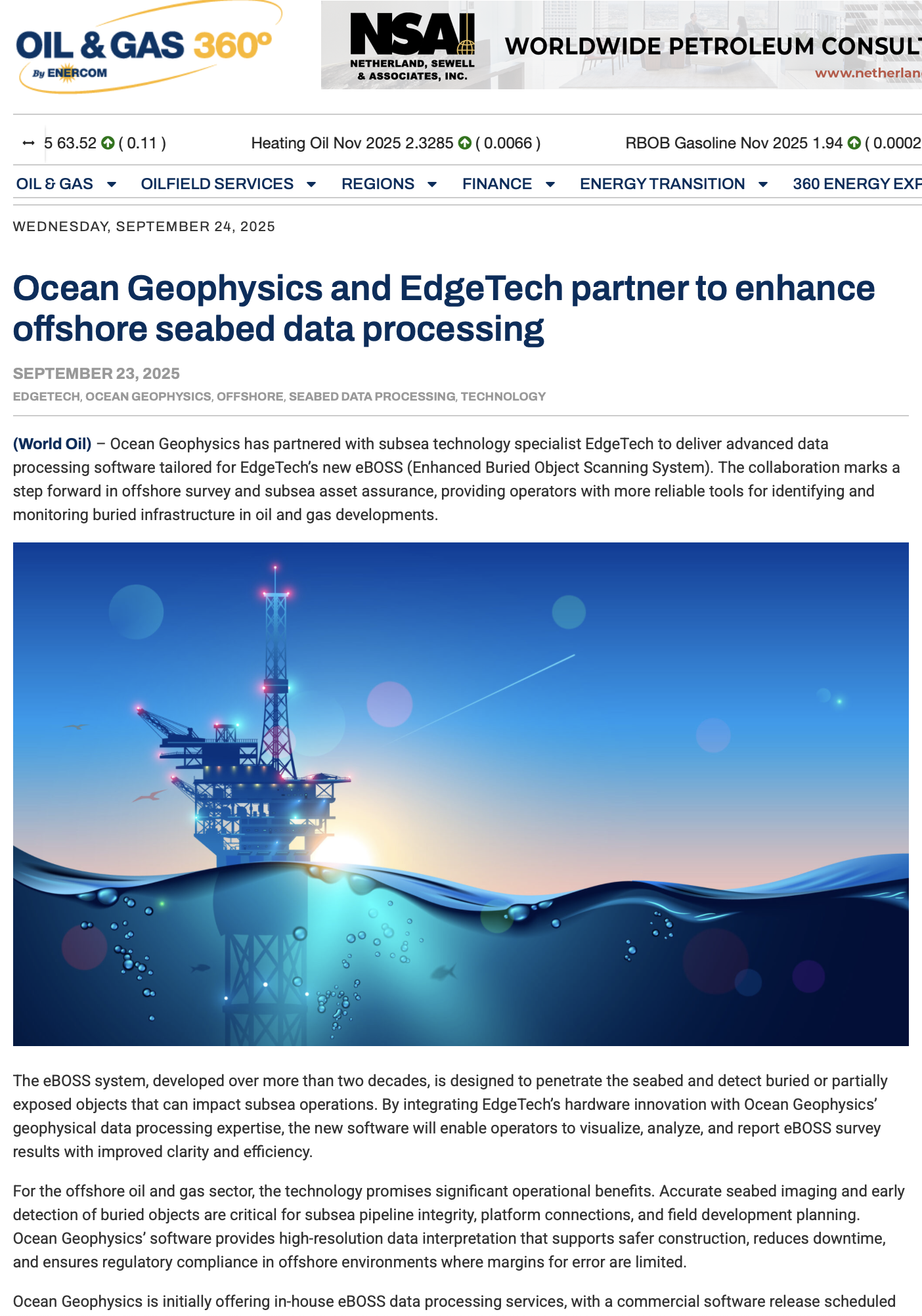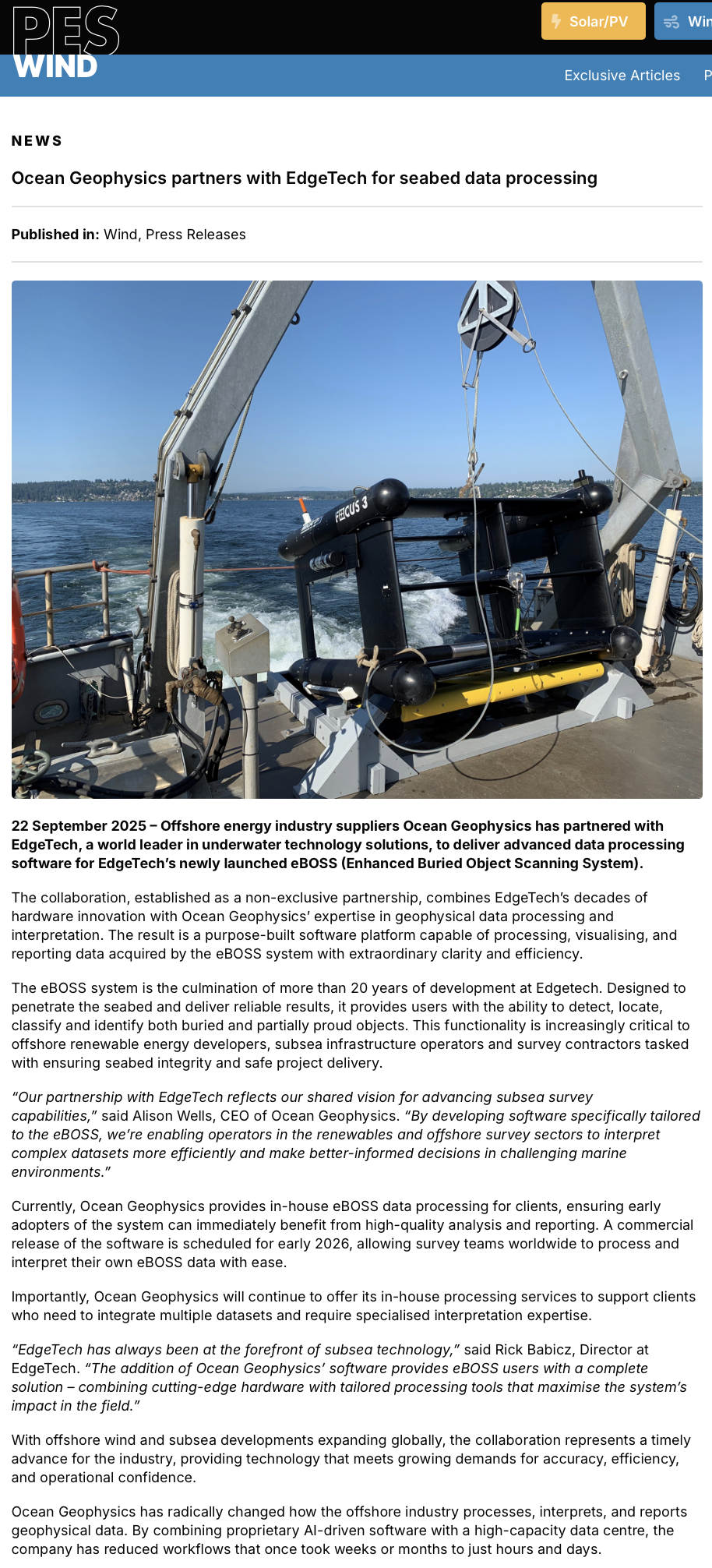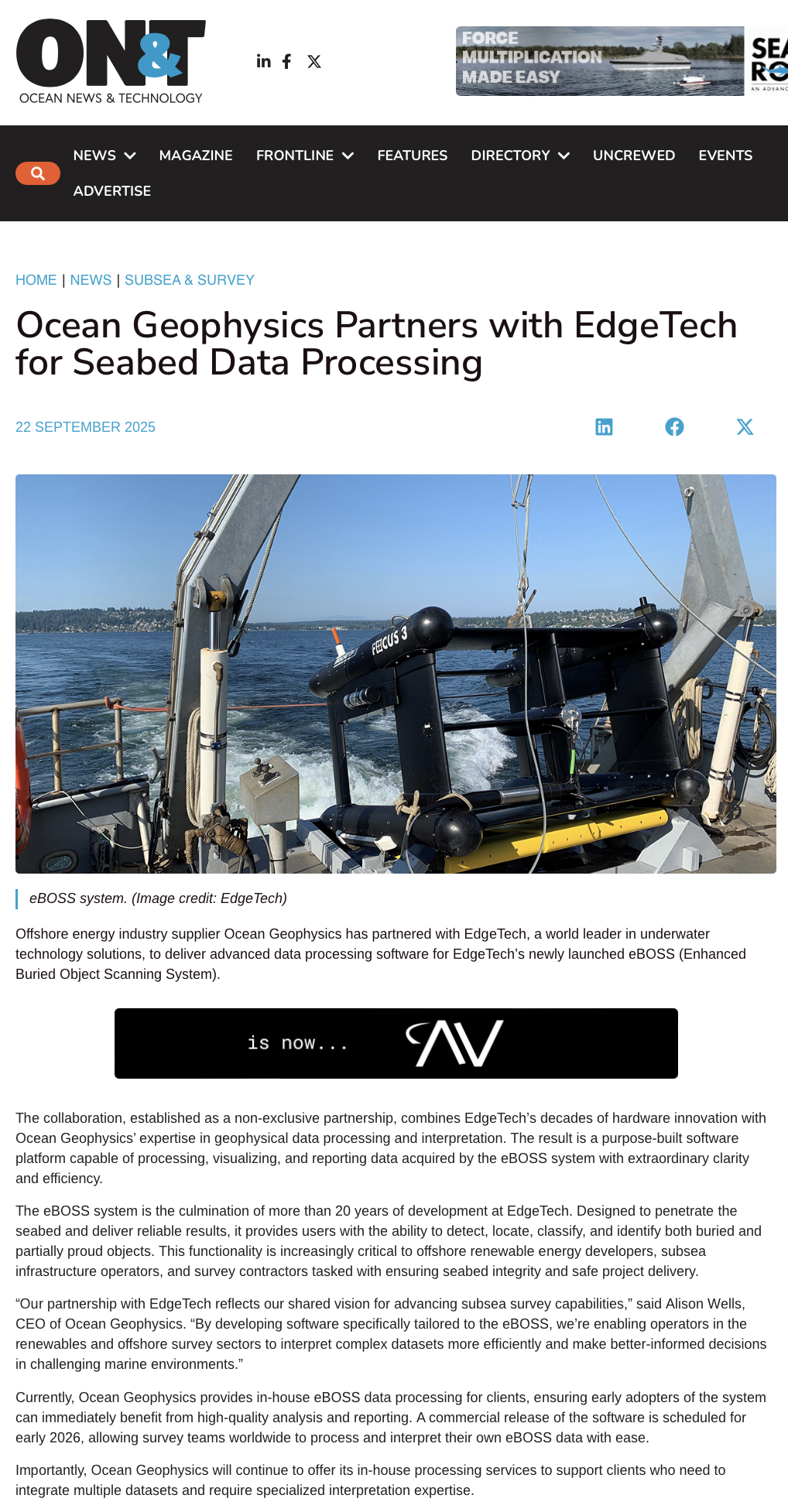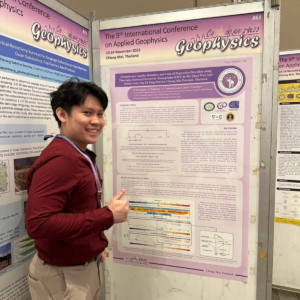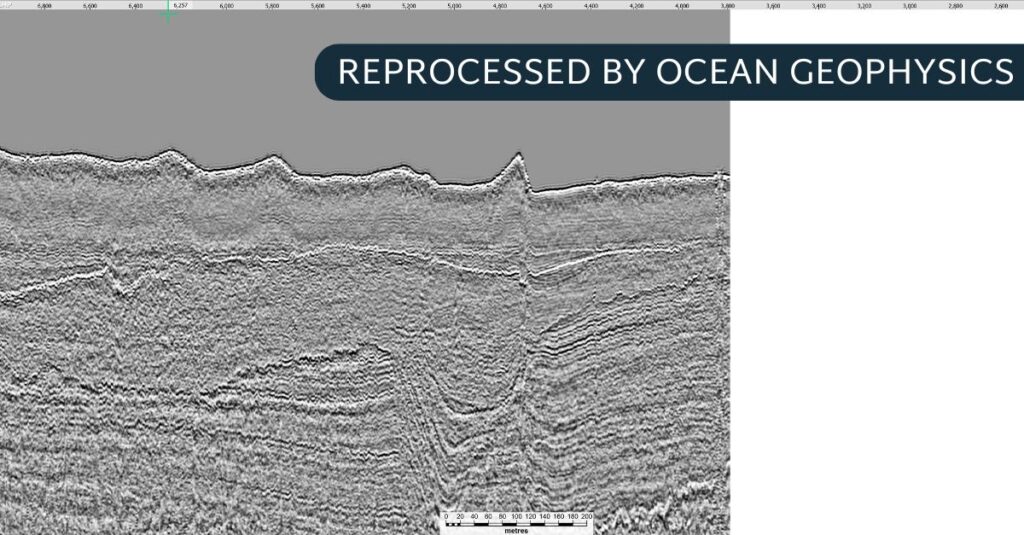
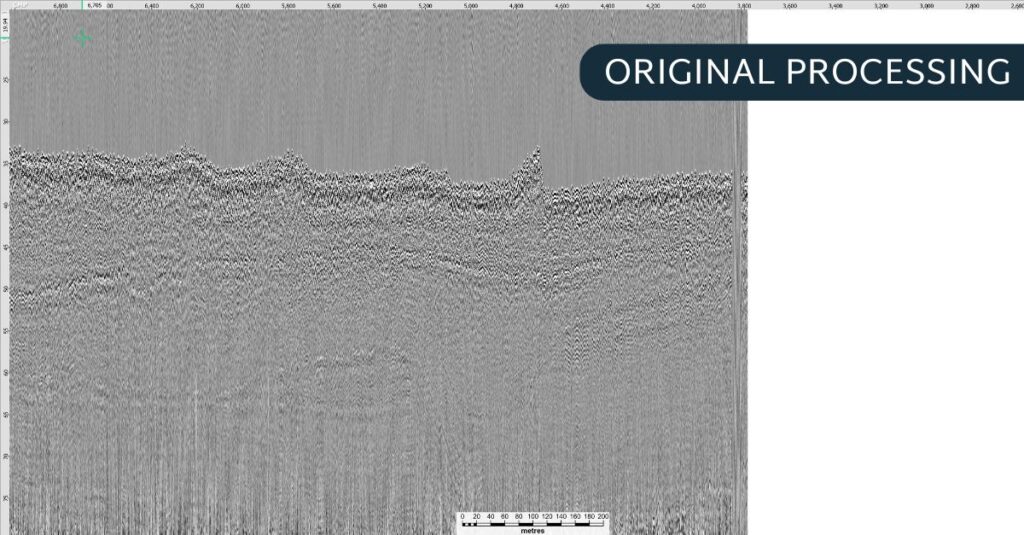
16th May 2024 – Renewable energy industry supplier Ocean Geophysics has introduced a solution to recycle and reprocess freely available seismic data, which can help developers reduce cost and risk when deciding which wind farms to bid for or not.
In Europe and Australia, historical seismic data – for example, from the offshore oil and gas or offshore renewable industry – is often freely available through national energy authorities. This is the case in the UK, Germany, the Netherlands, Denmark, Norway and Australia. To supplement this, it is also possible to purchase historical seismic data from the archives of oil companies that previously operated in the region.
In short, Ocean Geophysics takes historical data and using advanced software and modern processing techniques, reveals previously hidden information in the shallower regions. The aim is to reduce cost and risk of offshore wind developments, potentially by avoiding unnecessary and costly reconnaissance surveys offshore.
“We are essentially exemplifying the transformative power of advanced data processing techniques in enhancing vintage sub-bottom profiler/pinger data and S-UHRS from previous seismic surveys. Developers can utilise this reprocessed seismic data as part of their bid/no-bid decision making processes,” says Chris Weller, Director of Seismic at Ocean Geophysics.
Merging of shallow seismic data layers
Advanced data processing involves a multifaceted approach. Initially, raw sub-bottom profiler data undergo rigorous preprocessing to mitigate noise and artefacts, ensuring the integrity of data analyses. Subsequently, sophisticated algorithms and signal processing techniques extract nuanced information embedded within the dataset.
A key aspect of this enhancement process involves integrating shallow and deeper data layers, which traditionally presented challenges due to discrepancies in resolution and clarity. By using innovative processing techniques, it is now possible to merge these disparate layers, facilitating a much clearer and more holistic interpretation of subsurface structures and sedimentary formations.
“We have effectively bridged the gap between shallow and deeper data layers through meticulous processing, rendering them more interpretable and insightful. This breakthrough has unveiled previously obscured details, notably exposing a delicate layer of sediment that had until now remained invisible to conventional analysis methods. This thus gives insights into geology that was previously obscured by both the processing at the time and also the method of acquisition,” adds Chris Weller.
These advanced processing methodologies have yielded valuable insights into the subsurface environment of old vintage data. By surpassing the limitations of conventional data analysis approaches, Ocean Geophysics has unlocked previously inaccessible information, shedding new light on geological processes and environmental dynamics.
Ocean Geophysics is headquartered in the UK, and its high-capacity data processing centre is located in Chang Mai, Thailand.
(ENDS)
For further media information, please contact:
Endre Aaberg Johansen, Corporate Communications AS, tel: +47 41 61 06 05, e-mail: [email protected]
Ocean Geophysics is a specialist provider of processing, interpretation and reporting of geophysical data in oceans and rivers. The company’s large pool of 55 in-house geophysicists allows seabed survey companies and renewable energy developers and operators their own dedicated team from commencement to conclusion of each project. Ocean Geophysics is headquartered in the UK, and a high-capacity data processing facility in Thailand provides overnight data processing and reporting capabilities for customers. For more information, see www.oceangeophysics.com


